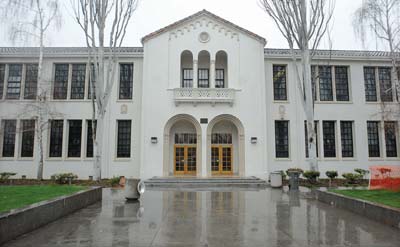The latest state API (Academic Performance Index) scores were published today. This is how San Benito High School scored in all its subgroups against high schools around the state. (Note: Students in grades 9-11 were tested in April, 2012.) Enrollment of tested students by percentage is also offered for comparison purposes. Scores over 800 are defined as “highly performing,” and 800 is the target score for the state in all categories.
Since 2006, the high school has grown 94 points in its API score and has reduced its achievement gap with its largest subgroup, Latino students, by 44 points. Latino Growth has been 126 points, while growth for Whites was 82 points.
Voters will have the opportunity to decide whether oo not funds continue to flow to schools to serve students and programs on November 6. The two propositions on the ballot dealing directly with school funding are Proposition 30, commonly known as the Governor’s initiative, and Proposition 38, the Molly Munger initiative. Proposition 30 will prevent an automatic trigger cut of $5.4 billion to K-12 education that would take effect on January 1, 2013. Prop 30 does the following:
1. Increases personal income tax on annual earnings over $250,000 for seven years.
2. Increases sales and use tax by _ cent for four years.
3. Allocates temporary tax revenues 89% to K-12 schools and 11% to community colleges.
4. Bars use of funds for administrative costs, but provides local school governing boards discretion to decide, in open meetings and subject to annual audit, how funds are to be spent.
5. Guarantees funding for public safety services realigned from state to local governments.
The State Legislative Analyst’s Office concludes that, based on California Franchise Tax Board data for 2009, the additional income tax is imposed on the top 3% of California taxpayers.
Prop 38, does the following:
1. Increases personal income tax rates on annual earnings over $7,316 using sliding scale from .4% for lowest individual earners to 2.2% for individuals earning over $2.5 million, for twelve years.
2. During first four years, allocates 60% of revenues to K-12 schools, 30% to repaying state debt, and 10% to early childhood programs. Thereafter, allocates 85% of revenues to K-12 schools, 15% to early childhood programs.
3. Provides K-12 funds on school-specific, per-pupil basis, subject to local control, audits, and public input.
4. Prohibits state from directing new funds.
Voters will have their say on November 6. If both measures fail, the impact to San Benito High School is estimated to be approximately $1.5 million in lost revenue. All eligible voters are encouraged to exercise their right to vote.
In the meantime, the high school continues to move in an overall positive trajectory, and all staff members, from teachers, to classified staff, to administration, to the community, are to be commended for supporting student learning.
Stan Rose is superintendent of San Benito High School District.










